What Is ADR in Film? A Clear Guide to Automated Dialogue Replacement and How to Do It
Learn what Automated Dialogue Replacement (ADR) is and how it's done. A practical guide to improving film dialogue quality with clear steps and tools.
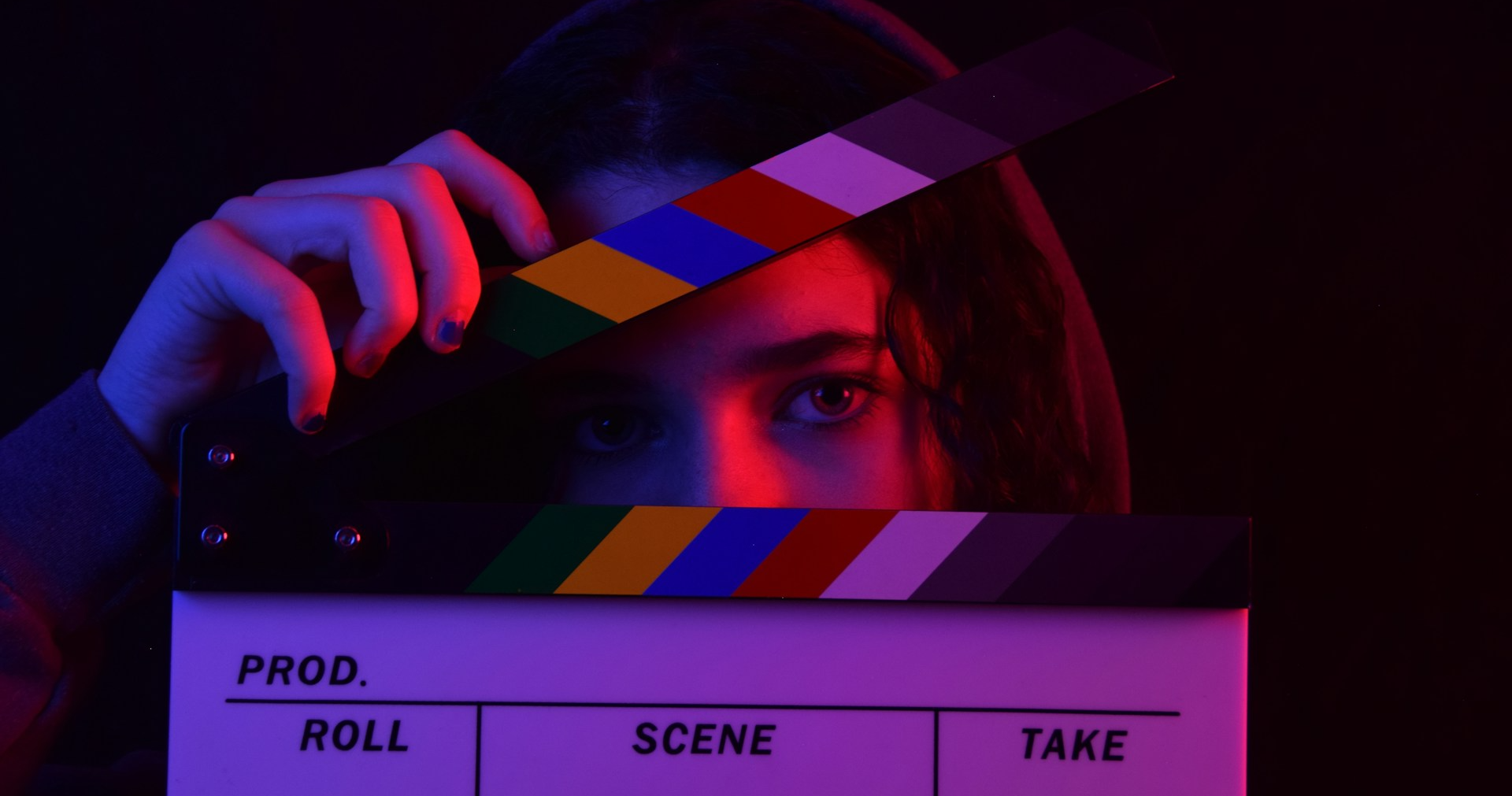
Have you ever watched a movie and wondered how the dialogue sounds so clear, even when the characters are shouting in a noisy street, whispering in a crowded café, or caught in the middle of an explosion? It’s almost like the characters have magical soundproofing, but trust me, no wizardry is involved. There is, however, a clever movie trick that keeps every word crisp and easy to catch.
Sound plays a huge role in how we experience movies. Without clean dialogue, even the most thrilling scenes can lose their punch. Though, catching perfect sound on set can be a real challenge. Barking dogs, passing cars, unexpected wind gusts, technical issues—all sorts of things that can mess with the original recordings. That’s where ADR swoops in to save the day.
So, What Is This ADR Thing?
ADR stands for Automated Dialogue Replacement, which basically means re-recording the actors’ dialogue after filming is done. Instead of using the lines recorded on set, which can have all kinds of background noise, technical glitches, or other distractions, filmmakers get the actors to come back to a quiet studio and say their lines again.
It’s not just about fixing bad sound either. Sometimes the director wants a different delivery, a line changes in the script, or the scene gets edited and the audio no longer lines up right. ADR gives filmmakers a chance to clean things up, improve the performance, or make changes without having to reshoot the entire scene.
During an ADR session, actors watch the footage and listen to the original dialogue through headphones. They then try to match their delivery perfectly, timing, tone, and all, to what you see on screen. The goal is to make it feel like the new recording was always there, blending seamlessly with the rest of the sound.
Why Is ADR Necessary?
Filming environments can be unpredictable. Background sounds like traffic, wind, or crew equipment often interfere with capturing clean dialogue on set. Even the best microphones and the most skilled crew can’t always keep those distractions out. ADR is essential for replacing all those unusable audio takes with clean versions recorded in a controlled setting.
Moreover, post-production editing can change the timing and structure of scenes, making the original dialogue out of sync with the visuals or emotional flow. Directors might also require line changes or additions after filming, which cannot be accommodated by editing existing audio alone. Since scenes are typically shot over multiple days and locations, actors’ vocal tone and volume can vary, creating inconsistencies that need correction for a unified sound.
ADR addresses these technical and practical issues by offering a controlled way of recording dialogue that matches the final cut precisely.
How Does ADR Work?
If we were to break down the ADR process into clear steps, here’s how it typically goes:
1. Identifying Problematic Dialogue
Once the film is largely edited, the sound team reviews the footage and marks the lines needing replacement. These could be segments affected by noise, changed scripts, or altered pacing.
2. Setting Up the ADR Session
Actors enter a controlled studio environment where they watch the scenes on a screen and hear the original audio through headphones. It helps them replicate timing, tone, and emotion to match the visuals accurately.
3. Recording Multiple Takes
Performers record several versions of the lines to capture the best possible match. Sound engineers monitor microphone placement and audio levels to ensure fidelity and consistency.
4. Syncing with the Picture
Using digital synchronization tools, the new recordings are precisely aligned with the actor’s lip movements and on-screen action to ensure a natural appearance.
5. Editing and Mixing
Sound editors integrate the new dialogue with ambient sounds, effects, and original audio, carefully combining them to create a balanced and coherent soundtrack that fits the scene.
Common Challenges in ADR
ADR sessions can be tricky for both actors and sound teams. One common problem is getting the dialogue to line up perfectly with the actor’s mouth movements. Even small delays or mismatches can feel strange to the viewer, so timing is important.
Actors also need to match the tone and emotion they gave during filming. This can be tough because the studio is very different from the original set, and the actor might feel differently. Sound quality is another concern; microphone setup and room acoustics have to be just right to make the new recordings fit.
There are also technical issues like making sure the background sounds match and the new lines don’t stand out. Sometimes, actors have to do several takes to get it just right.
Cleaning Dialogue Audio Efficiently
Sometimes the dialogue sounds fine, but background noise, echo, or reverb gets in the way. Instead of re-recording, you can clean the audio to make the voice clear without changing the performance. Tools like LALAL.AI Voice Cleaner help remove these unwanted sounds quickly and easily, saving time and money in post-production.
How to Remove Background Noise from a Dialog
1. Upload your file. Open LALAL.AI Voice Cleaner in your browser and click the Select Files button to upload your audio or video file containing the dialog.
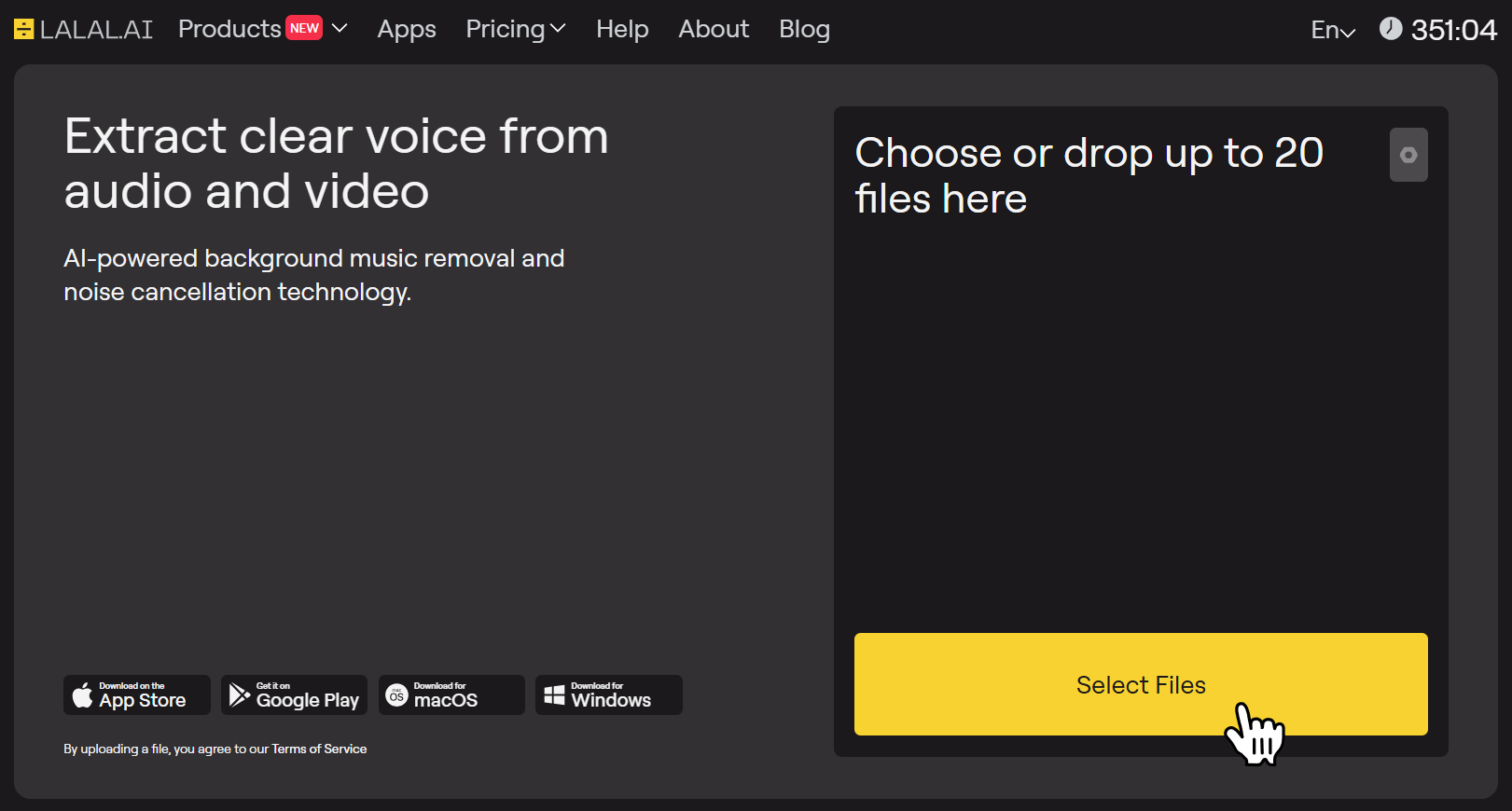
The service supports MP3, OGG, WAV, FLAC, AIFF, AAC, M4A, AVI, MP4, MKV, MOV, and M4V formats.
2. Pick your settings. Click the settings icon in the top right corner of the Select Stem menu.
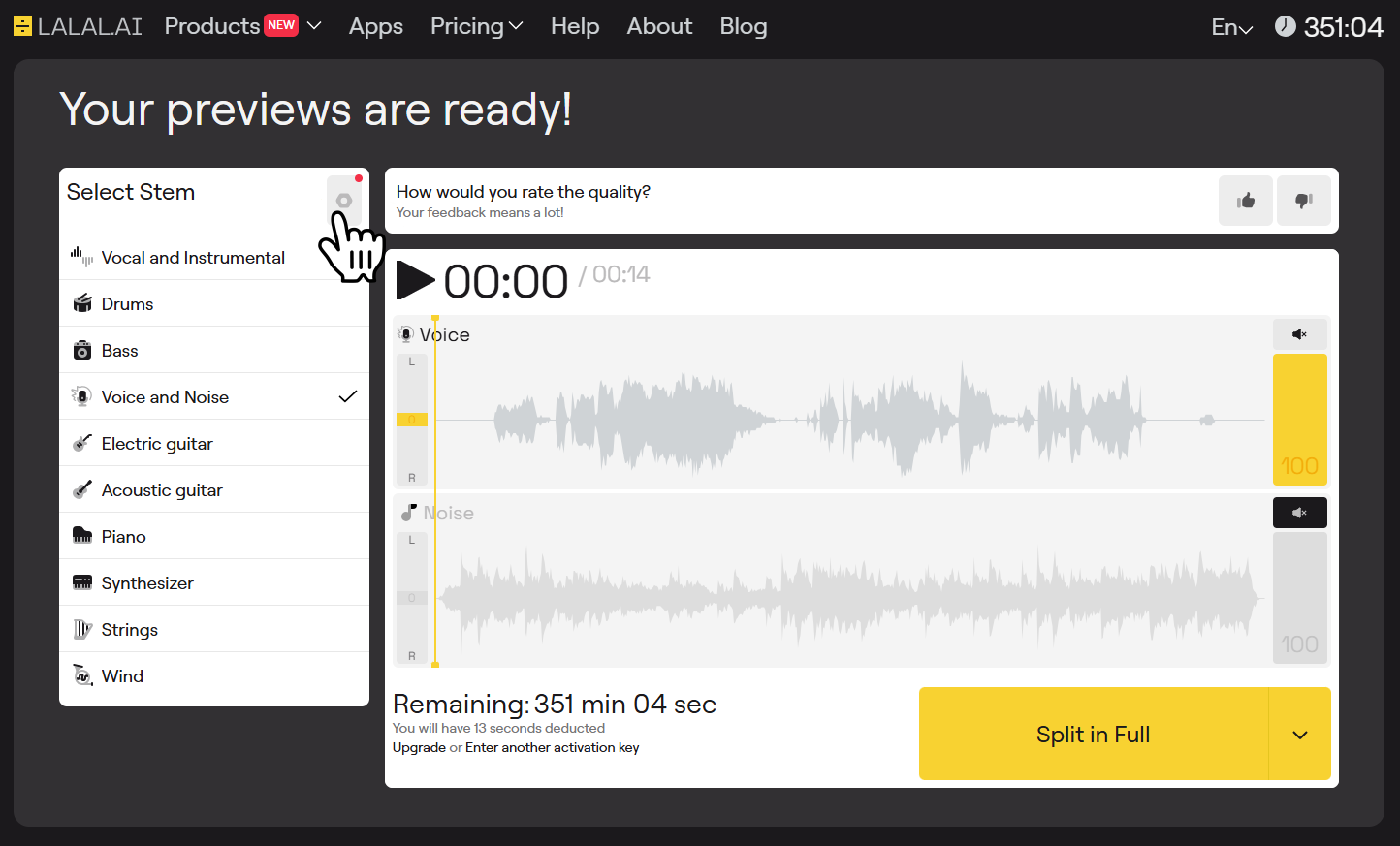
In the pop-up settings window, select the Noise Canceling Level. You can pick Mild to apply very light noise reduction; Normal to enable soft noise compression; Aggressive to add very aggressive compression of unwanted sounds.
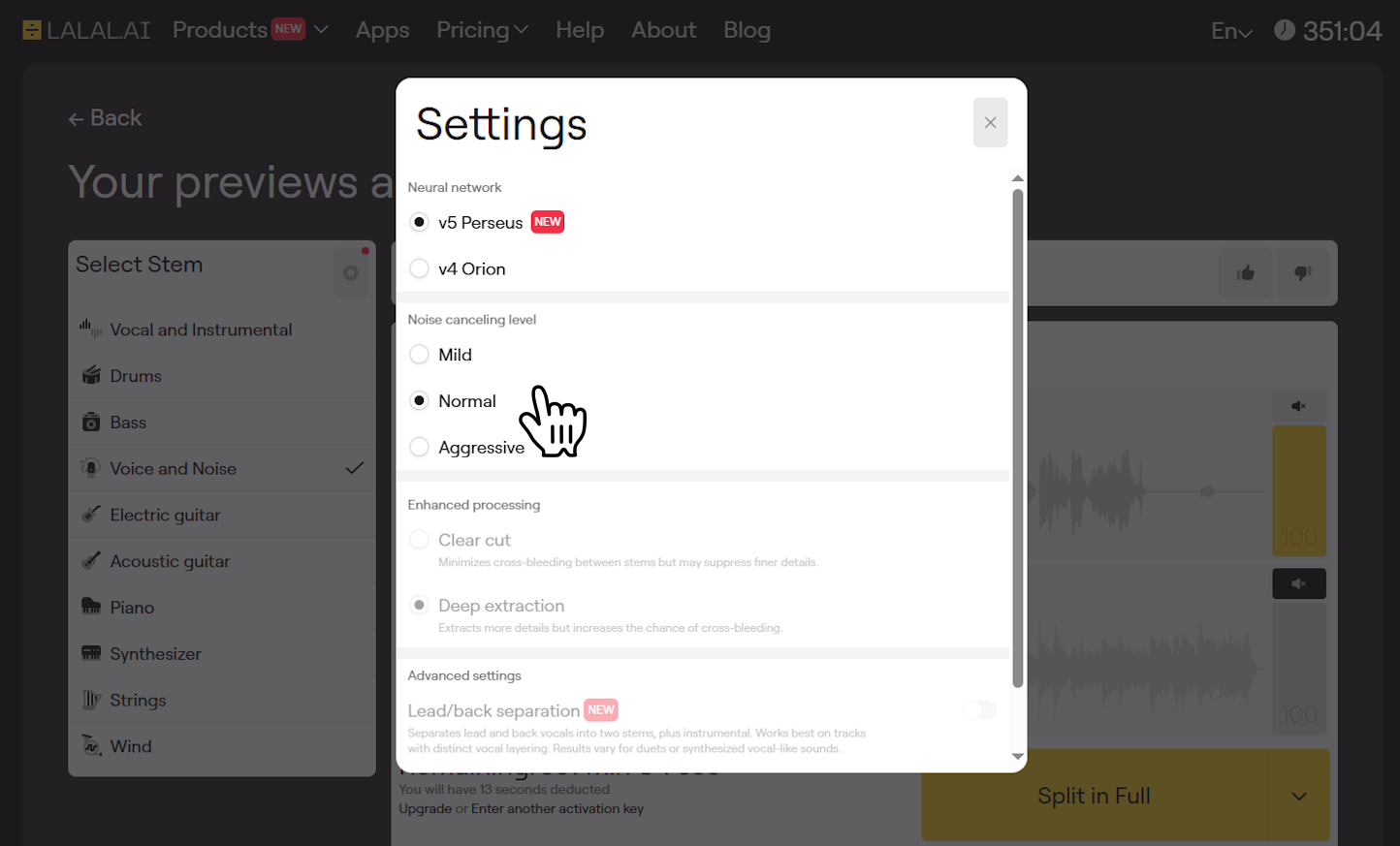
If you roll down the settings window, you’ll see the De-Echo option that reduces reverb and echo in the dialog track. If your source doesn’t have echo or reverb, feel free to leave the setting disabled.
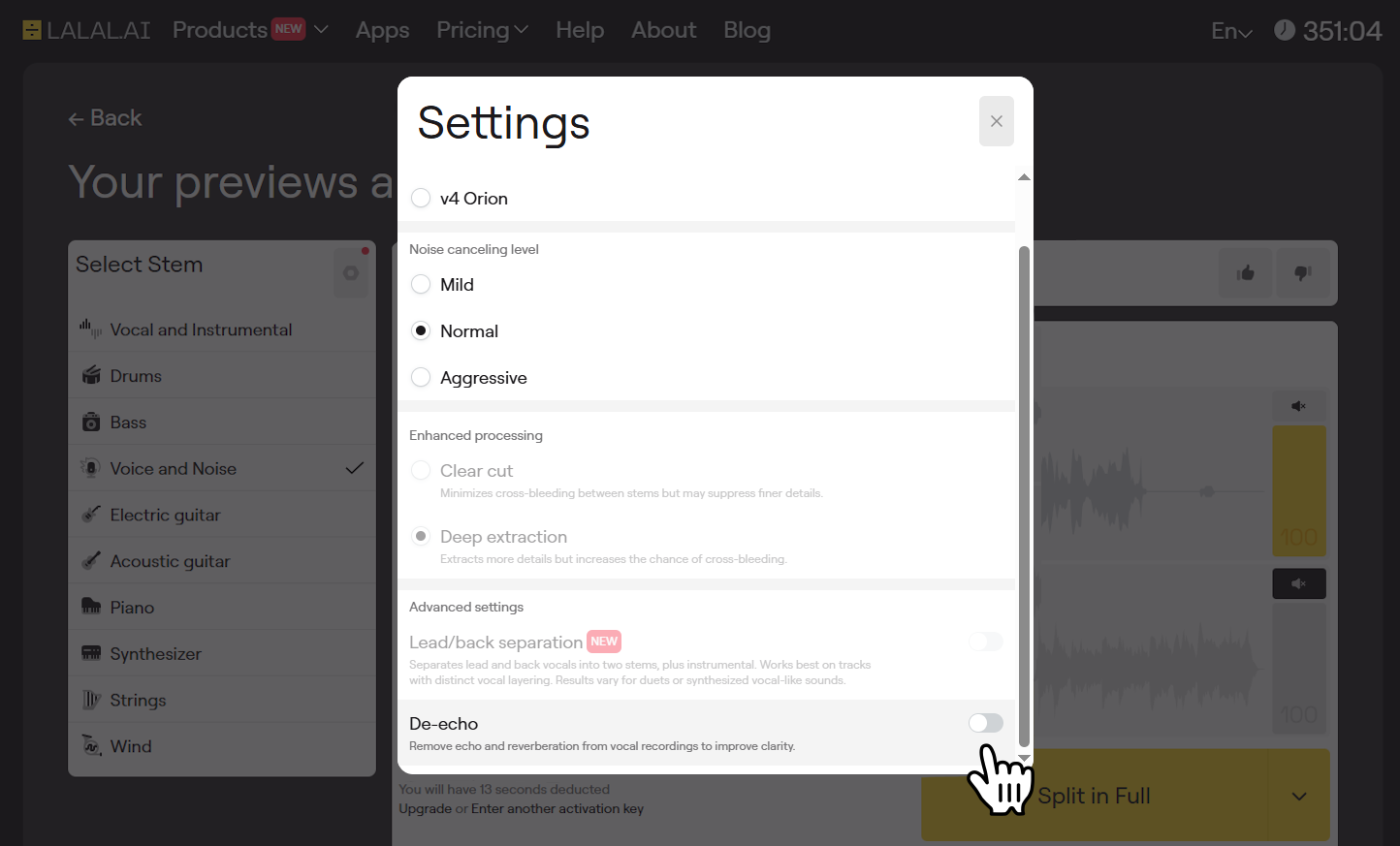
3. Listen to the preview. If you changed the default settings, click the Create New Previews button to regenerate the initial preview.
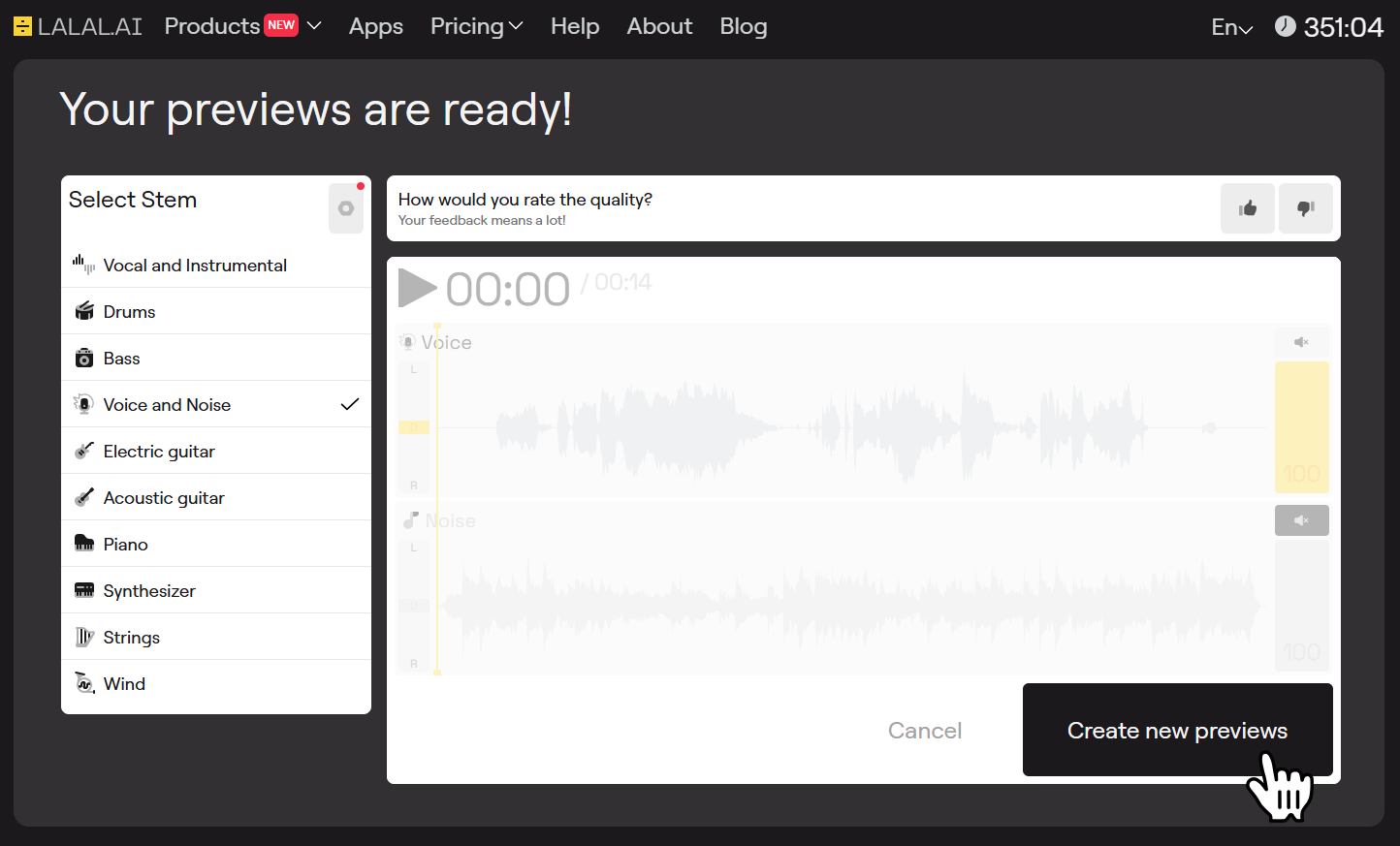
After that, click the play button within the audio preview section to evaluate the cleaned up dialog.
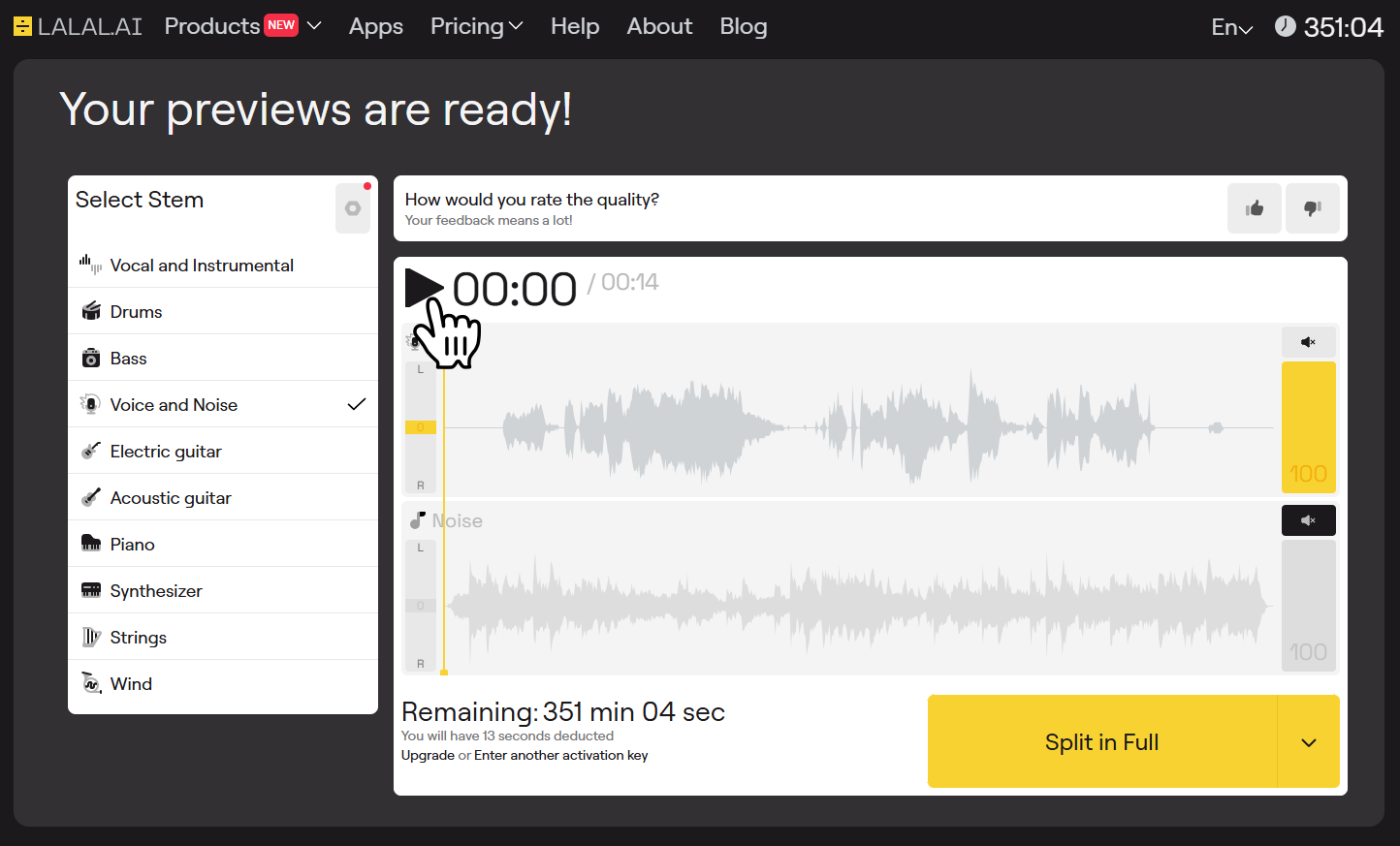
Tweak the Noise Canceling Level settings again if needed.
4. (Optional) Change the output format if you want to export the entire cleaned dialogue track in a different format than the original. Click the arrow on the Split in Full button and select one of audio formats from the drop-down list.
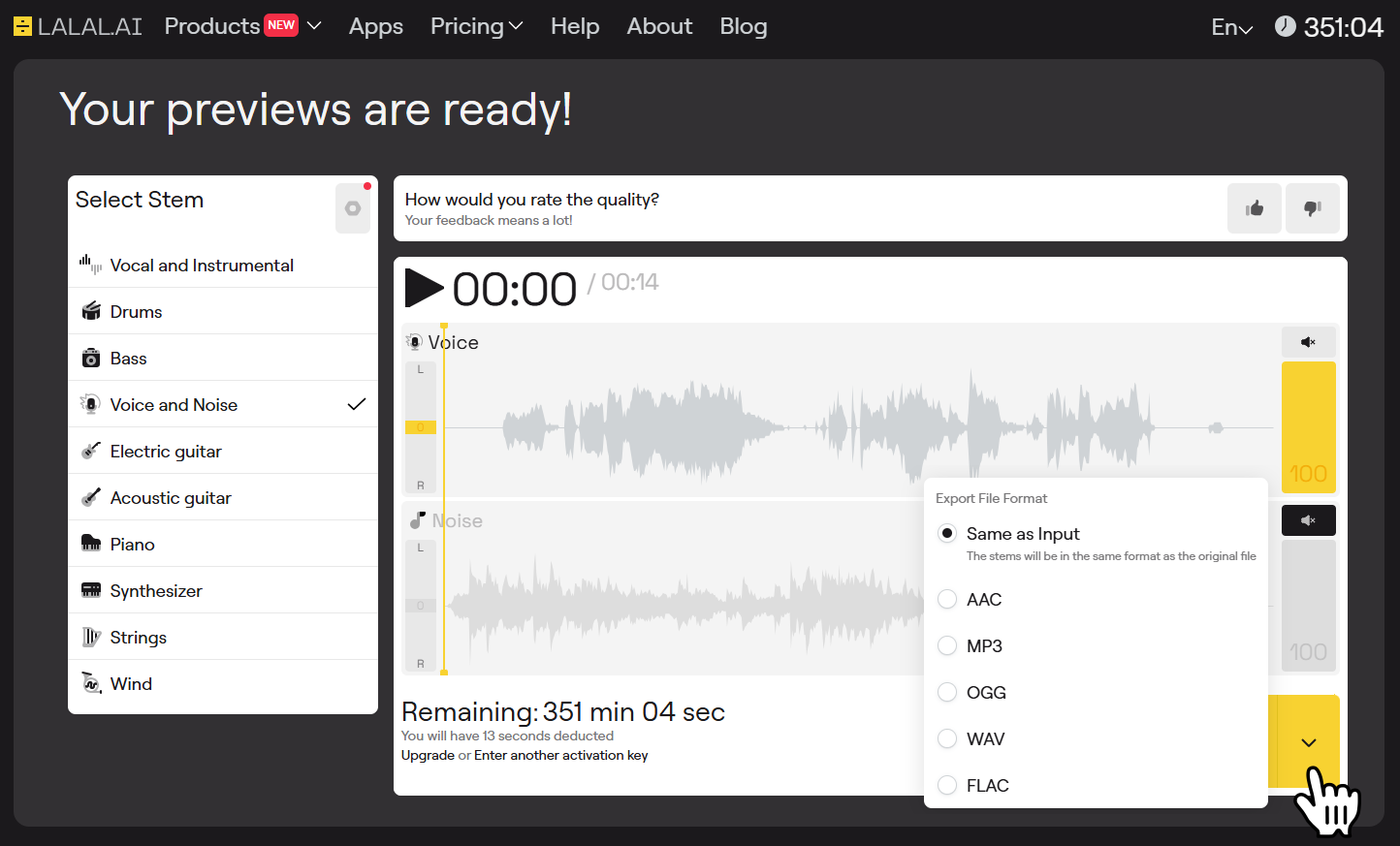
5. Clean up the dialog track in full. If you re happy with what you hear in the preview, click the Split in Full button.
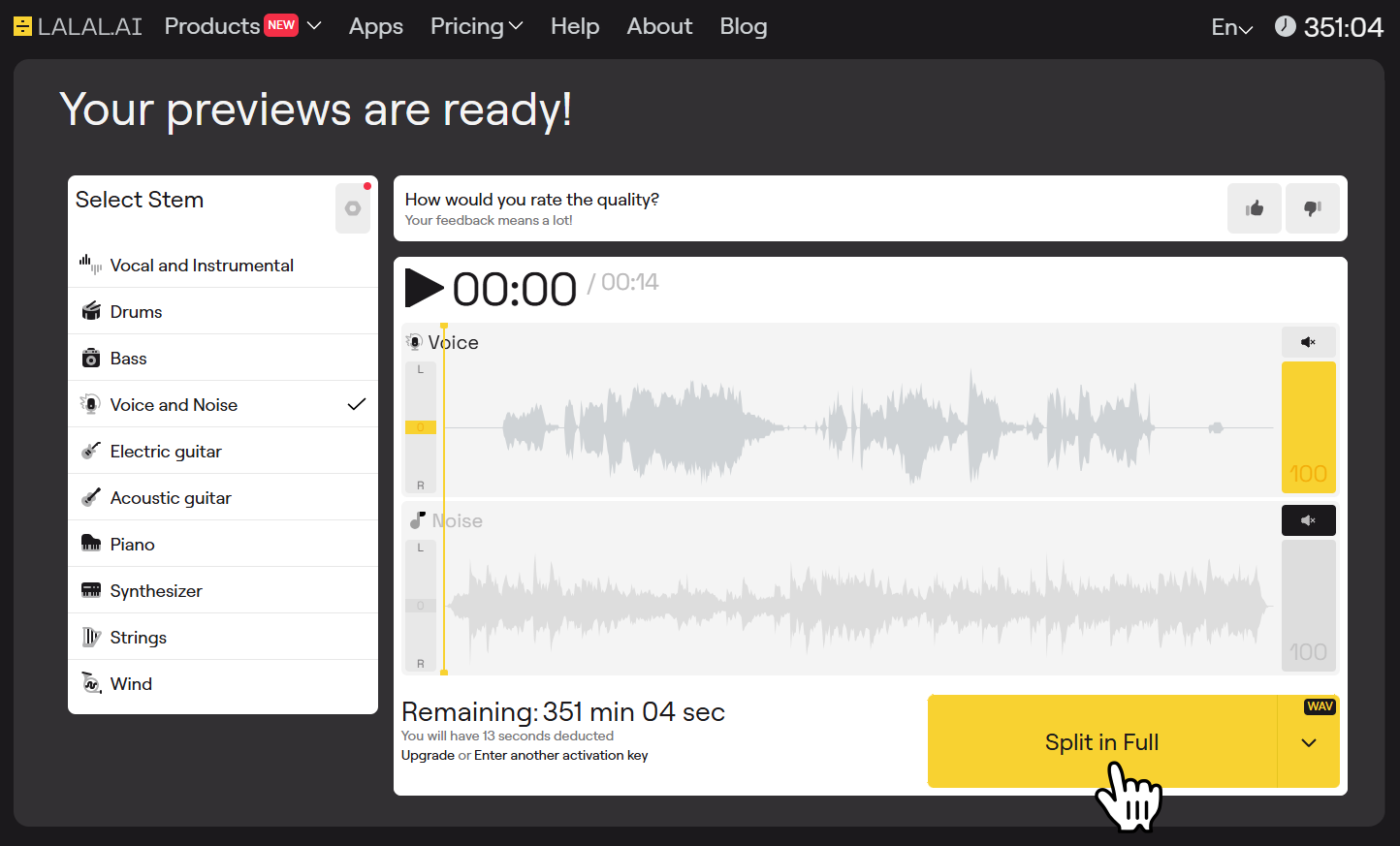
6. Save the noise-free dialog track. Click the Download button within the Voice [Full] section.
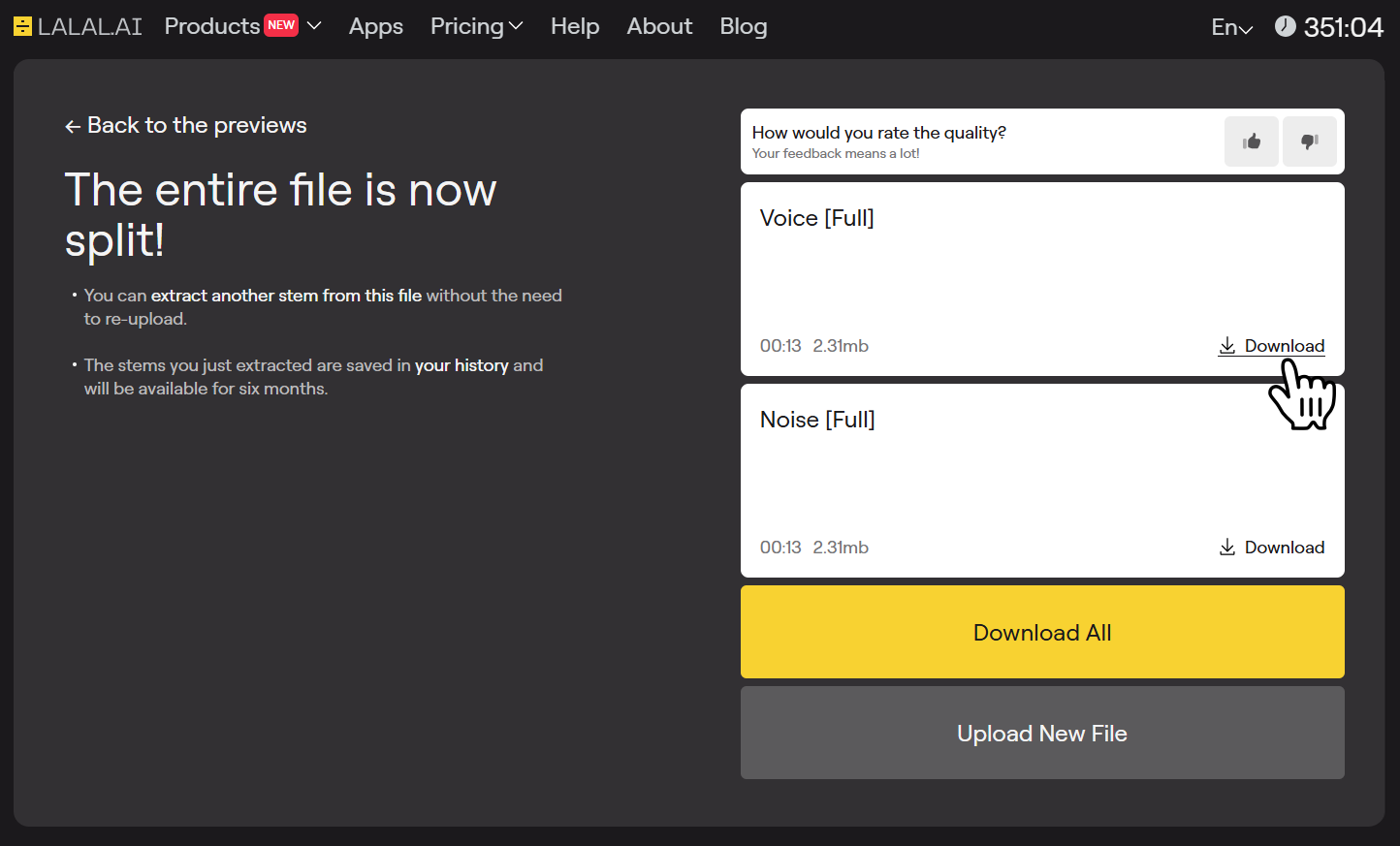
Now the noise-free dialog track is ready to be synched to the video.
Other Technology and Tools Used in ADR
ADR uses a number of special tools to make sure the recorded dialogue fits the film and sounds good. Digital audio workstations (DAWs) are the main software used to record, edit, and sync dialogue with the video. Common DAWs for ADR include Avid Pro Tools, Adobe Audition, and Logic Pro. These programs help sound engineers control the timing and quality of the audio.
Timecode synchronization is important to keep the video and audio perfectly in sync. Tools like Video Sync (previously known as Video Slave) or built-in features in DAWs help matching the speech exactly to the actor’s lip movements on screen.
Actors wear good-quality headphones such as those from Sennheiser or Beyerdynamic during recording. They let them hear the original dialogue and background sounds clearly so they can copy the tone and timing accurately.
High-quality microphones, like the Neumann U87 or AKG C414, are used to capture clear and natural voices. Studios are treated with special materials that reduce echoes and unwanted noises, helping to record clean audio.
Using these tools together helps make ADR smoother and results in clear, well-timed dialogue that fits naturally with the film.
Follow LALAL.AI on Instagram, Facebook, Twitter, TikTok, Reddit, and YouTube for more information on all things audio, music, and AI.
